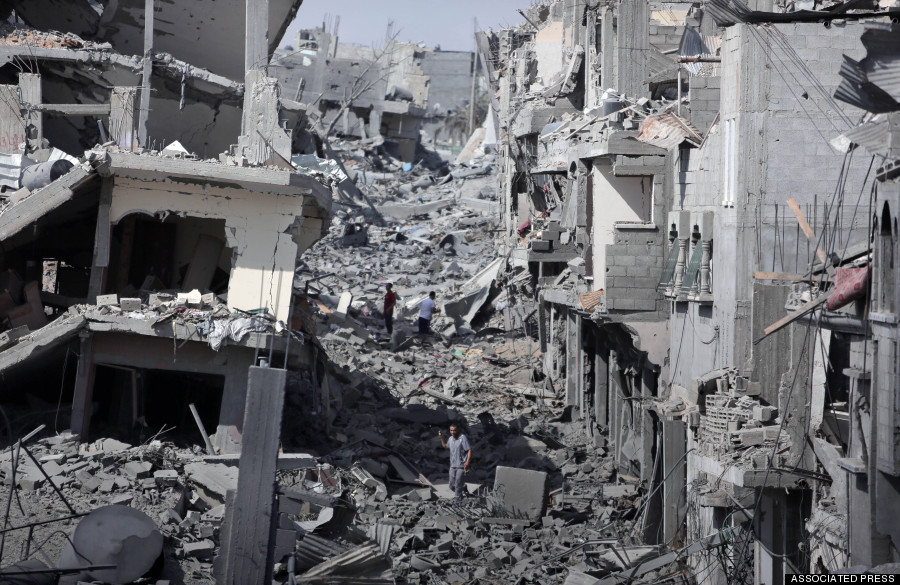Two news headlines relating to recent events in two Palestinian enclaves reminded one of the new realities gradually taking place in those enclaves.
Let us start with the Gaza Strip. Since 2007 it has been embargoed by the Israelis under the pretext that the Hamas government there is an irrevocable terrorist foe which will stop at nothing when it comes to completely destroying Israel. Since the end of 2008 the Israeli military has been engaged in no fewer than three major military campaigns against Hamas which have devastated Gaza. Gaza has been a virtual enclave surrounded by an Israeli embargo and an increasingly harsh blockade on its frontier with Egypt’s Sinai region (where the Egyptian military has destroyed hundreds of houses in the border-town of Rafah and flooded hundreds of tunnels from Egypt into Gaza which has hurt the economy of that coastal Palestinian enclave).
Israeli air strikes into Gaza have been intermittent and are usually in response to Hamas rocket fire or rocket fire from other smaller groups (Israel has long held Hamas responsible for all rocket-fire emanating from that territory regardless of who actually fires them). One such smaller group was struck a few days ago by an Israeli air strike after it fired some rockets into Israel. Apparently those rockets were fired by armed Islamists with possible ties to the infamous Islamic State (ISIS) group (the Salafi Omar Brigades was the group who fired the rockets, they are known to be, at least, pro-ISIS), or the Islamist terror gang operating in the Egyptian Sinai (which has pledged its allegiance to ISIS), apparently trying to instigate yet another round of destructive clashes between Hamas and Israel.
Israeli policy in recent months has seen to the Israeli government loosen its once firmly held embargo on Gaza to allow in the necessary commodities needed to keep Gaza’s economy afloat. With Hamas solidified in power there Israel seems to be counting on being able to have its southern Palestinian neighbour propped-up as a bulwark against other terror groups. Once Hamas doesn’t attack Israel it can remain the governing authorities in Gaza there. Such a set-up is indicative of a change in Israeli government policy which only a few years ago was resolutely committed to destroying Hamas. That commitment has gradually shifted into a tacit acceptance of Hamas once it remains in place as a viable ad-hoc bulwark which does not attack Israel and prevents other groups within the coastal strip from attacking or trying to infiltrate Israel.
The Palestinian-district of Yarmouk in the Syrian capital city Damascus was once home to over 160,000+ Palestinians before the horrible war in Syria. As a result of that war a paltry 16-18,000 Palestinians (that figure may be even lower at this stage) remain in the district which has been besieged and bombed by the Syrian regime of Bashar al-Assad since 2013. Hundreds of Palestinians have been killed as a result of the regimes inhumane siege of the area. Having bombarded and devastated that district the Assad regime has recently reached out to the remaining Palestinians there since Islamist groups like ISIS have attacked and stormed the district. Recognizing that the now devastated district stands in the way of ISIS getting a foothold in Damascus Assad has offered those beleaguered and terrorized Palestinians arms to fight off ISIS onslaughts. Something which in turn sees them serving as a de-facto bulwark that will help protect and preserve the very regime which has been besieging, bombarding and killing them for the last two years.
Before the uprising against his rule sparked the ongoing Syrian war in 2011, Assad had been friendly with the Hamas group and had even hosted members of its leadership. Since the start of the war however Hamas could not condone this crackdown. Something which saw to a break in relations. Iran also cut off relations with, and aid and funding to, Hamas as a result of their support for Syrian opposition forces. However after the 50-day summer 2014 war between Israel and Hamas, Iran and its ally Hezbollah restored their formerly cordial relations with Hamas, much to the consternation of Assad who is still wary of that group. More recently the other primary Palestinian political party and movement, the Fatah, are reportedly seeking to restore ties with the Syrian regime–probably in order to try and salvage what is left among the heaps of rubble that was once a populated and vibrant Palestinian district. If these Palestinians in Damascus renounce any and all support, be it material or vocal, to any other Syrian or group protesting or fighting the Assad regime and also be prepared to fight off vicious jihadi onslaughts they will likely be able to remain in what is left of Yarmouk. Failing that they can become displaced persons or refugees like some 11 million others in Syria. Talk about being stuck between a rock and a hard place!
So we see in these two separate enclaves that Palestinians are clearly being given a small chance to retain what might, if they are lucky, amount to decent lives and existences for themselves if they are willing to fight and risk the most gruesome of deaths in holding off the likes of ISIS. It’s clear that given these respective situations we’re presently situated at an important crossroads with regard to the future, or lack thereof, of these respective Palestinian communities.


One thought on “Battered Palestine: From Gaza to Yarmouk”
Comments are closed.